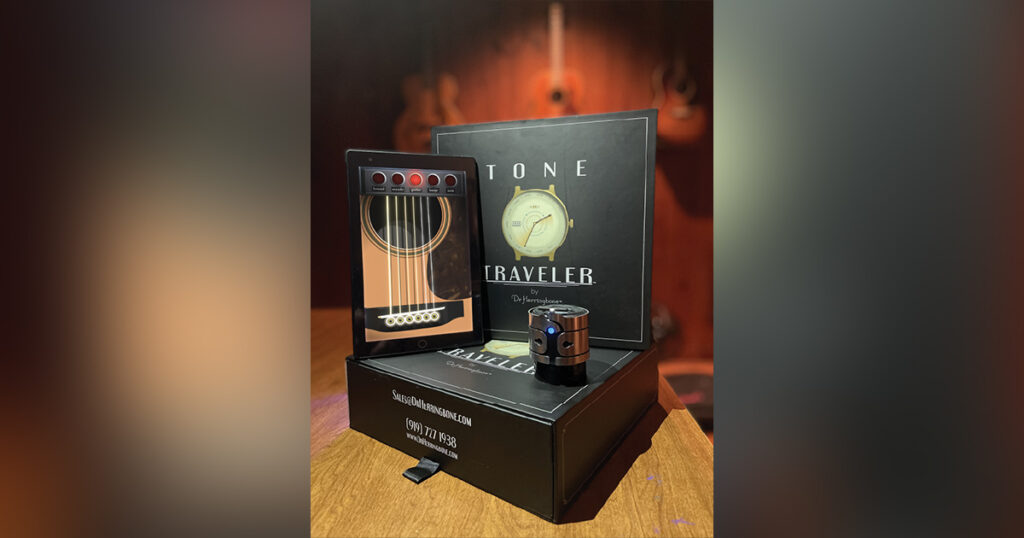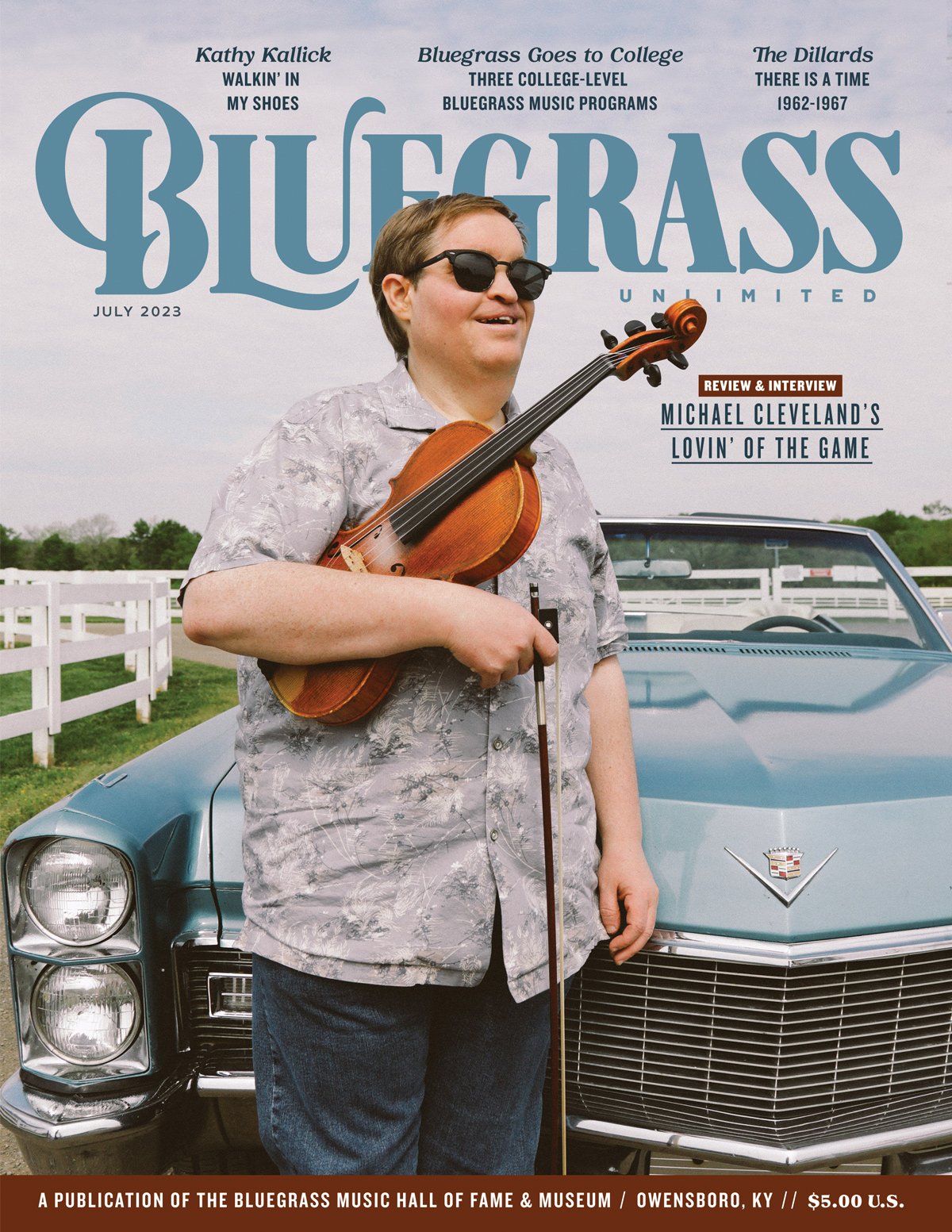Tone Traveler
Over the past 15 years or so, the guitar industry has embraced a controversial, even divisive, new trend: relicing new guitars to make them sound, appear and feel like they’ve been played for decades. Some people love this, and companies like Pre War Guitar Co. have carved a strong niche in this area. Others, however, view this as defacing a valuable new instrument, and insist people should just play the instrument and let nature take its course.
With the introduction of DrHerringbone’s Tone Traveler, we enter the world of what can accurately be called “acoustic relicing” or perhaps “sonic distressing.” Using a new technology to generate polyphonic acoustic frequencies, unlike the older ToneRite device, ToneTraveler claims to accelerate the break-in progress new stringed instruments go through as the tonewoods age and the instrument is played. (To be clear, the Tone Traveler is designed so it leaves no permanent marks or physical damage to the instrument it’s used on.)
For this test, DrHerringbone loaned Bluegrass Unlimited a Tone Traveler unit and gave us freedom to conduct long-term tests on a variety of instruments, new and vintage. The results were conclusive: this device does what it claims—with a few caveats.
Consisting of an agitator unit about the size of half a tomato paste can that clips between the strings to rest on the bridge saddle, the Tone Traveler is activated via Bluetooth by a dedicated smart tablet with pre-set modes for guitar, mandolin and most other common bluegrass instruments. It even allows the user to select specific frequencies to be imparted on each individual string. That could be a breakthrough for players working in DADGAD or other altered tunings. One note of caution, however; when turned on, the unit emits a penetrating, droning sound that could drive the leprechauns out of Ireland when used at full power. In our tests, we had to isolate the instrument on a stand inside the downstairs shower, but the noise factor could be an issue for apartment dwellers.
We tested it on a 2021 Bourgeois OM Large Soundhole, a 2020 Bourgeois Banjo Killer, a 2020 Northfield Artist F-5, and a 1942 Epiphone Triumph orchestral archtop, with exposures ranging from a few hours to over 100. In every case the device produced a noticeable difference in sound, some more than others. The OM is constructed of the stiffest torrified Adirondack available, and even after a year’s playing, the E and A strings still sounded slightly muted and dampened. After 100 continuous hours of treatment, the guitar simply came alive, especially on the 5th and 6th strings which typically take longest to break-in. The mandolin, which has experienced heavy play and numerous gigs and rehearsals, didn’t show much improvement after 40 hours. Similarly, the 70-year-old Big Band warrior archtop is as broken in as it’s ever going to get and showed only marginal improvement.
We loaned the unit to Reno’s Music, the local Bourgeois dealer and a leading trader in custom shop Martins and vintage pieces in Indianapolis, for similar tests. Same result; the device enhanced the volume, timbre and projection of new pieces, and even on vintage guitars that hadn’t been played for decades. Broken-in instruments fared worst, but that’s to be expected.
So who should buy a ToneTraveler? Well, at $300 the unit and smartpad pose a substantial investment for an individual. For a guitar store wanting to rev up new instruments and bring vintage pieces to their sonic peak, this is a no-brainer. Similarly, builders wanting to impart the openness and bloom great mandolins and guitars achieve when broken-in before shipping an instrument out would be ideal candidates.
In any case, the ToneTraveler from Dr Herringbone represents a real technological breakthrough, based on our experiences. The short-term results were impressive. Are their issues of potential overuse resulting in wood fatigue? Our testing didn’t go that far, but a little common sense would keep that in line. Bottom line is, this isn’t going to make your APAC mandolin sound like a Loar, and it’s not as effective on instruments that already have aged. But as a sonic bridge to help turn a “green” instrument into one with a mature, powerful voice as quickly as possible, this device has no competition.

